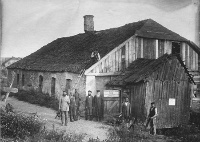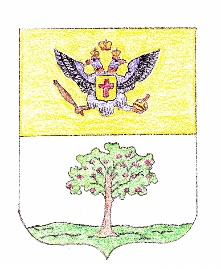
Lubin or Labun'
| Home |
||||
| Location |
||||
| Gazetteer/History |
||||
|
||||
| Photographs |
||||
| Emigration |
||||
| Immigration |
||||
| Landsman |
||||
| Families |
||||
| Links |
||||
Updated
22 May 2011
22 May 2011
|
|
|||||||||||||||||||||
Labun References |
||||||||||||||||||||||
| Geographical Dictionary of the Polish
Kingdom and other Slavic Countries, Volume V, 1884 [click on title, above, to see the original Polish document] Labun, town. Zaslav District....about 16 [km] west of Polonnoye, at the confluence of the Poganka and Khomora (nearby communities include Labun, Chrolin, Sudilkov). In 1870, Labun had 496 houses with 1796 occupants - 37% were Jews. Catholic Church, 5 orthodox churches, 3 chapels, synagogue, 2 prayer houses, beer brewery, 3 cement kilns, 6 oil pressing facilities, 3 brickyards, 2 water mills, 26 shops, 51 craftsmen, weekly farmers' market. St. Ann's Catholic Church was built from stone in 1731 by Farther Jozef Lubomierski. Within the parish there were branches from Hryciv and chapels in Kuskowie, Kalenichach, Malych, Mikuline and Onachowcach. At the end of the XVI Century, the land belonged to the Labunski family. Christopher and his wife Anna Chomiakowna built the orthodox Church of the Holy Trinity. The next landowners were Lubomierskis. Despite fortifications, the town was damaged during the Chmielnicicich War. At the end of the XVIII Century - when August III was King of Poland, the town was inherited by Jozef Stempkowski who married the daughter of Duke Martin Lubomierski, famous for holding parties and spending, who built a spectacular palace replacing the ruins of the old and small castle. The palace became famous for balls and parties and Polish King Stanislaw August visited it twice in 1781 and 1787. Details can be found in memoirs of Mr. Ohocki. Stempkowski's fortune was sold to pay bills in 1792. In 8 April 1793, clergy and nobility met here and pledged their allegiance to the Russian Tsar Katherine II. [translated by Andrew Dziobek] |
||||||||||||||||||||||
| Cohen, Chester G.
(2007) Shtetl Finder:
Jewish Communities in the 19th and Early 20th Centuries in the Pale of
Settlement of Russia and Poland, Heritage Books, Inc. |
Labun, W of Kiev Southwest of and close to Polna (Polonnoye). 1890 - Meir Lerner, born 1867, was appointed rabbi. |
|||||||||||||||||||||
| Mokotoff, Gary, &
Sallyann Amdur with Alexander Sharon (2002) Where Once We Walked, Avotaynu,
Inc. |
Yurovshchina, Ukr; (Labun) 104 km SE of Rivne |
|||||||||||||||||||||
| Spector, Shmuel (editor)
(2001) The Encyclopedia of Jewish
Life Before and During the Holocaust, New York University Press. |
Labun, Kamenets-Podolski
dist., Ukraine. Jews are first mentioned in 1705 . . . Jewish
population was 432 in 1765, rising to 1,192 in 1847 and dropping to 952
in 1923 . . . |
|||||||||||||||||||||
| |
||||||||||||||||||||||
| World War II: By 5
July 1941, the Germans occupied Labun and Polonnoye and other villages
and towns in the area. Click the Holocaust
link for pages about Labun during this time period. |
||||||||||||||||||||||
 To the top
To the top
